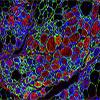
The technique used in this preclinical study could aid tissue regeneration following severe accidents, surgical resections, or progressive muscle loss due to age or genetic disease.

The technique used in this preclinical study could aid tissue regeneration following severe accidents, surgical resections, or progressive muscle loss due to age or genetic disease.
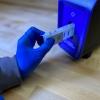
The National Institutes of Health (NIH) today announced three new contracts and one new award to an existing contract for scale-up and manufacturing of novel COVID-19 testing technologies.
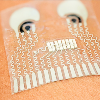
NIBIB-funded engineers have developed a flexible epidermal patch that can simultaneously and continuously monitor cardiac output and metabolic levels of glucose, lactate, caffeine, or alcohol. The patch is a major step towards continuous non-invasive health monitoring.

NIH has awarded four additional contracts for the development and scaled-up manufacturing of new COVID-19 diagnostic testing technologies through its Rapid Acceleration of Diagnostics Tech (RADx) initiative. The awards total $29.3 million and will help increase testing capacity for COVID-19.
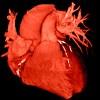
Abnormal heart rhythms—cardiac arrhythmias—are a major worldwide health problem. Now scientists are using ultrasound for more accurate maps of arrhythmic sites in the heart for improved success of ablation procedures.

Sometimes scientists discover exciting results after spending years searching for an answer to a single question. But sometimes discoveries are made by surprising collaborations and connections—resulting in answers to questions no one would have thought ask.
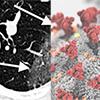
The Medical Imaging and Data Resource Center (MIDRC), a collaboration of leading medical imaging organizations funded by NIBIB, has launched a repository of imaging data to facilitate medical imaging research on COVID-19.
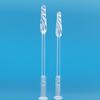
The National Institutes of Health has awarded three new contracts totaling $36.7 million for the development of new COVID-19 diagnostic testing technologies and production of specimen collection kits and swabs. The Rapid Acceleration of Diagnostics (RADx) initiative has advanced the scale-up of 25 testing projects since July 2020, which now include lab-based, point-of-care, and potential at-home formats.
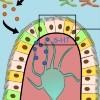
Research into what is known as the gut-brain axis continues to reveal how the brain and gut influence each other’s health and well-being. Now researchers are endeavoring to learn more about gut-brain discourse using a model system built in a lab dish.
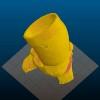
Every year thousands of Americans, mostly over age 75, require replacement of their aortic valve. Now 3D printed patient-specific models of the aorta can aid presurgical planning and improve outcomes of minimally invasive valve replacement.